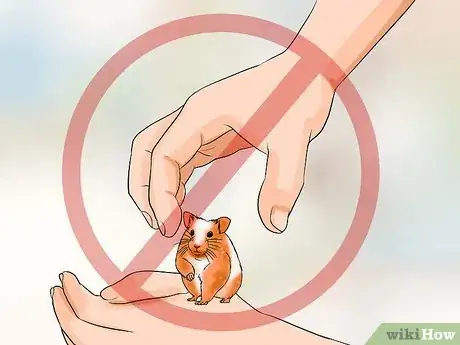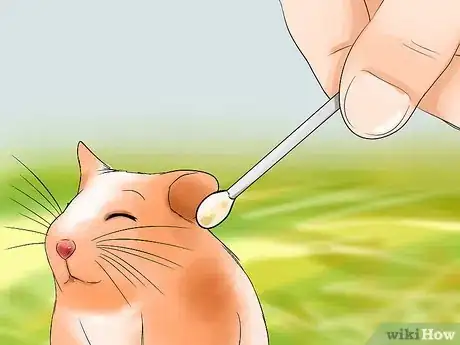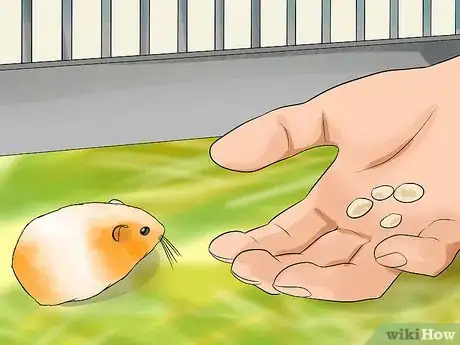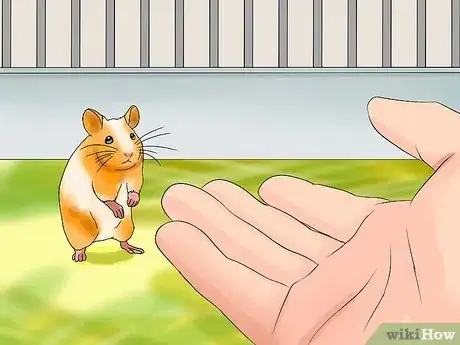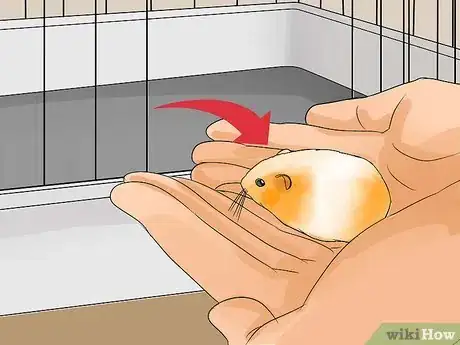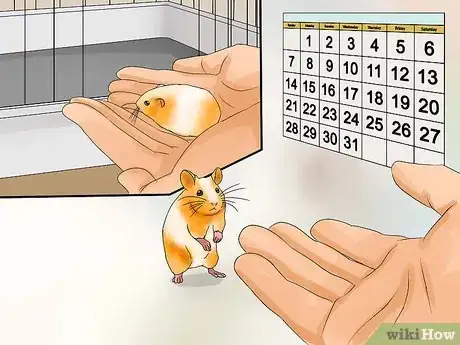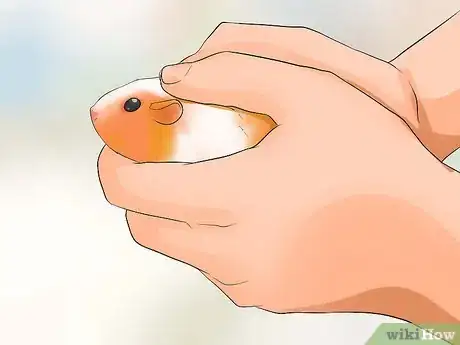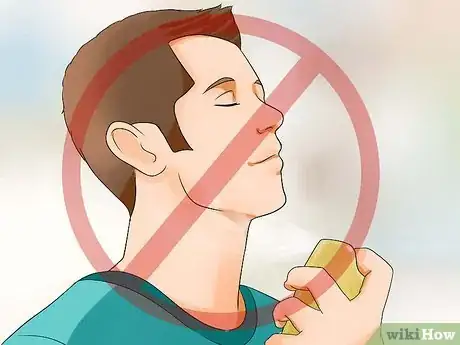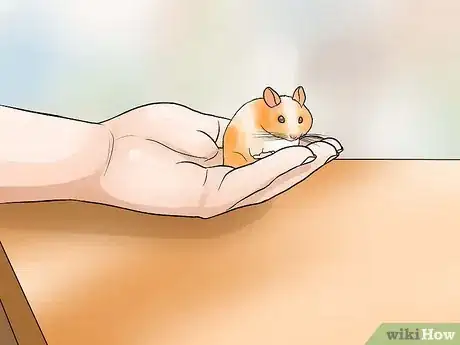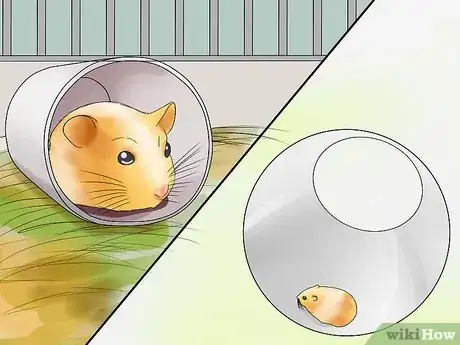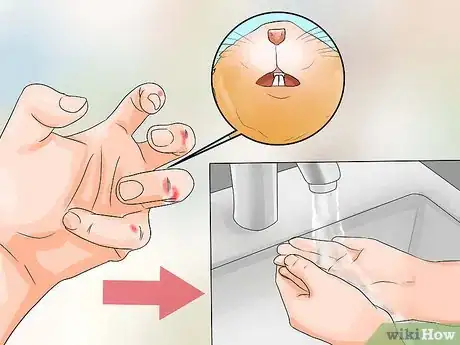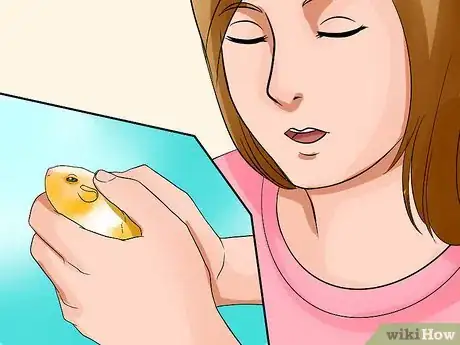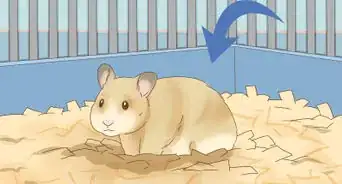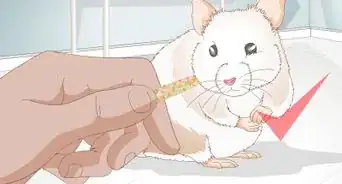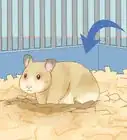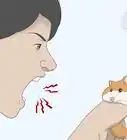This article was co-authored by Pippa Elliott, MRCVS. Dr. Elliott, BVMS, MRCVS is a veterinarian with over 30 years of experience in veterinary surgery and companion animal practice. She graduated from the University of Glasgow in 1987 with a degree in veterinary medicine and surgery. She has worked at the same animal clinic in her hometown for over 20 years.
This article has been viewed 21,963 times.
Hamsters make great pets and they generally enjoy being held. However, when you first bring your hamster home they may find the new environment stressful and frightening.[1] Eventually you will be able to pick it up and play with it outside the cage. The more you hold your hamster, the more it will get used to being held and begin to enjoy the interaction.
Steps
Picking Up Your Hamster
-
1Don’t attempt to pick up the hamster for the first few days. Bringing a hamster home to a new environment can be very stressful for the animal. Allow it some time to acclimatize to its new cage and bedding. Experts recommend that you don’t try to handle a new hamster for the first 12 – 24 hours.[2]
-
2Use a soft, blunt object to gently stroke the hamster. This gets the hamster used to being touched making it is less likely to bite you. A Q-tip or the blunt eraser end of a pencil works well for this.
- Softly speak to your hamster while you are doing this to soothe it and let it hear your voice.
- Repeat this several times a day for a few days. When it ignores the eraser or starts gnawing it, the hamster is ready for the next step.[3]
Advertisement -
3Wash your hands. Hamsters have very poor eyesight and use their sense of smell to interact with the world. You should wash your hands with unscented soap to remove any residual scents of food or other pets from your skin.
- This is especially important if you have other pets, particularly hamsters.
- Your hamster may get the “scent” of another hamster from your hand and think it is being attacked by that hamster. It may bite.[4]
-
4Place your hand inside the cage with a small treat in it. This engages your hamster's interest while getting it used to the presence of your hand. A very small chunk of apple works well for this. Put your hand in the cage and let the hamster come up and sniff around it.
-
5Leave your hand inside the cage and allow the hamster to investigate. It may climb on your hand, but do not try to cup your hands around the hamster or pick it up at this stage.
- Just let your hand lie limply on the cage floor.
- Outstretched fingers may be perceived as an attack by the hamster.[7]
-
6Slowly cup your hands around the hamster. Do this with your hands still in the cage. Keep your hands low to the ground so that if the hamster jumps out of your hand it won’t fall far.
- Cup with your bottom hand and place the other hand over the top to create a "hand cave." [8]
-
7Take your hamster outside the cage. Only do so if the hamster appears suitably relaxed in your hands.
- Remember that being outside the cage can be very stimulating for the hamster so choose somewhere quiet with minimal distractions.
- If it seems agitated or starts biting, put it back in the cage and try again some other time.
Handling Your Hamster
-
1Handle your hamster at least once a day. The more you play and pet with your hamster, the more friendly and tame it will become.
- Neglected hamsters that have not been handled for an extended period of time can revert back to their fearful nature and may bite when picked up.[9]
- You may have to go through the steps to get it used to being picked up again.
-
2Hold your hamster securely when taking it in and out of the cage. Put your index fingers below its neck lightly and your thumbs on top of the hamster's body.
- If you are wary of lifting the hamster out of the cage with bare hands, use a cup or a small bowl to get it out of the cage.[10]
- Disposable plastic cups work well for this.
-
3Never “sneak up” on your hamster. Hamsters have relatively few defenses in the wild and they are wary of sudden changes in their environment.[11]
- Even if your hamster is tame and used to being held, don’t grab it from its cage out of the blue.
- Always allow it to see your hands for a couple of seconds first.
-
4Don’t wake up your hamster suddenly. Be aware that hamsters are nocturnal. You will generally have to wake them up to play with them during the day.
- Gently move their nest and allow them a minute to wake up.[12]
- Alternately, you can call softly to your hamster to wake it up.
-
5Don’t wear perfume. Hamsters recognize you by scent. A strong perfume or cologne may confuse them. Avoid strongly fruit scented soap when you wash your hands as your hamster may think your hand is food and try to bite it.
Playing with Your Hamster Safely
-
1Never squeeze your hamster. Hamsters, because of their small size, are extremely fragile. Never ever squeeze your hamster.
- Be particularly gentle in the area just below the forelegs.
- Pressure to this region can prevent the hamster breathing.
- Supervise young children when they are playing with hamsters. Teach them to be gentle with the animal.[13]
-
2Sit on the ground or hold your hamster over a tabletop. Hamsters can make sudden leaps from your hand and a fall to the ground from a height could injure them. Make sure you are always sitting down with your hamster, so that if it escapes it will fall into your lap. Alternatively, hold it over a table.
-
3
-
4Clean a hamster bite carefully. Even tame hamsters will bite if they are startled or frightened. They may also bite if they have the scent of food on your hand. Wash and disinfect the area around the bite and cover with bandage to stop the bleeding. If the bleeding doesn’t stop or it doesn't begin to heal within a few days, go to your doctor.[16]
- Hamster bites are not generally serious and they do not transmit diseases such as rabies.
- Some people can be allergic to hamster saliva, although this is relatively rare.
-
5Gently blow on the hamster's face to discipline it. Hamsters do not respond well to physical punishment. Never strike or yell at it.
Warnings
- If your hamster seems scared, leave it alone. Some hamsters simply do not enjoy being handled.⧼thumbs_response⧽
References
- ↑ http://www.humanesociety.org/animals/hamsters/tips/welcoming_new_hamster.html?credit=web_id81812035
- ↑ http://www.smallanimalchannel.com/hamsters/hamster-interaction/how-to-handle-a-hamster.aspx
- ↑ http://www.2ndchance.info/hamsterbite.htm
- ↑ http://www.smallanimalchannel.com/hamsters/hamster-interaction/how-to-handle-a-hamster.aspx
- ↑ http://www.2ndchance.info/hamsterbite.htm
- ↑ http://erinshamsters.wix.com/hamsters#!taming-a-hamster/glikt
- ↑ http://www.smallanimalchannel.com/hamsters/hamster-interaction/how-to-handle-a-hamster.aspx
- ↑ http://www.caringpets.org/how-to-take-care-of-a-hamster/handling-taming/
- ↑ http://www.2ndchance.info/hamsterbite.htm
- ↑ http://www.smallanimalchannel.com/hamsters/hamster-interaction/how-to-handle-a-hamster.aspx
- ↑ http://www.smallanimalchannel.com/hamsters/hamster-interaction/how-to-handle-a-hamster.aspx
- ↑ http://www.2ndchance.info/hamsterbite.htm
- ↑ http://www.caringpets.org/how-to-take-care-of-a-hamster/handling-taming/
- ↑ http://www.smallanimalchannel.com/hamsters/hamster-interaction/how-to-handle-a-hamster.aspx
- ↑ http://www.2ndchance.info/hamsterbite.htm
- ↑ http://www.2ndchance.info/hamsterbite.htm
- ↑ http://www.smallanimalchannel.com/hamsters/hamster-interaction/how-to-handle-a-hamster.aspx
- ↑ http://www.smallanimalchannel.com/hamsters/hamster-interaction/how-to-handle-a-hamster.aspx
